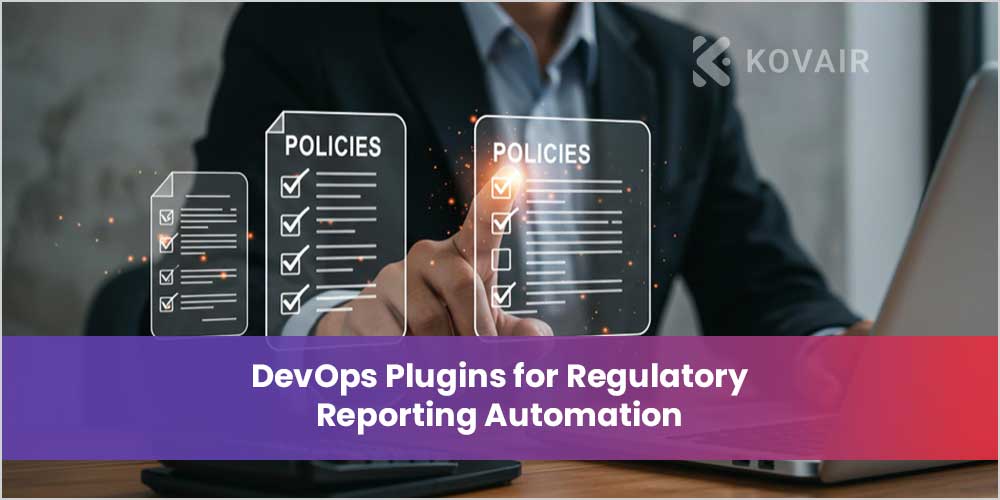
With the present-day high-paced digital and regulatory environment, businesses have been under tremendous pressure in order to produce software fast and still fully compliant with the existing regulations. Regulatory reporting is no longer a manual and isolated task. Rather, it has moved to be part and parcel of software development and delivery pipelines. Here is where the automation of regulatory reporting via DevOps plugs helps, namely, simplifying the compliance procedures, enhancing the accuracy of data, and minimizing the chances of non-compliance.
The necessity of Automation of Regulatory Reporting
The conventional methods of reporting can be based on spreadsheets, manual validation, and unconnected systems. These means are slow, error-prone, and fail to keep in touch with the delivery of constantly evolving cycles. The question arises in pursuing DevOps practices by organizations as to how compliance checks and reporting can be included in the same automation streams as the development, testing, and deployment.
Regulations in various sectors such as finance, healthcare, and technology require traceability, auditability, and regular documentation. DevOps plugins used to automate such processes guarantee that compliance requirements are not done as an afterthought but are embedded into the software lifecycle.
How to use DevOps Plugins to achieve regulatory compliance
DevOps extensions serve as bridges between development software, compliance software, and reporting software. They automate routine processes, such as collecting evidence, producing compliance reports, and verifying changes with regard to internal or external regulations. To illustrate, the integrated DevOps ecosystem offered by Kovair has connectors and plug-ins that synchronize information between CI/CD tools, ALM systems, and monitoring platforms and defines an integrated framework of compliance.
These plugins have the ability to automatically perform reporting actions when a new build or deployment takes place. They are able to log, record configuration and changes, which are essential to audits and regulatory validation. Such automation removes the human factor, improves data accuracy, and establishes a feedback mechanism between development and compliance teams.
Creating a DevOps Pipeline that is Regulatory-Aware
In order to move to the state of the art of regulatory automation, the organization needs to make compliance part of all levels of DevOps. This starts with the definition of regulatory requirements as code providing policies, thresholds, which are validation rules, and all of this is coded directly into the configuration management layer. These rules can be enforced in this way through tools incorporated through the Omnibus platform of Kovair, which can be used to make sure that these rules are followed across projects and settings.
Code changes can be tested using automated systems to ensure that they are secure and comply with the appropriate standards of the system before implementation. In the meantime, it is possible to use reporting plugins to create auditable logs at the end of all pipeline executions. This generates an entire digital record that can be accessed by regulators and auditors without hesitation. This will not only hasten the delivery but also give confidence to stakeholders who require transparency and accountability.
DevOps and Financial Regulations
Automated reporting is especially considered critical in financial and compliance-driven industries. The anti-money laundering (AML) rules, in particular, presuppose that organizations are supposed to keep clear records of their monitoring systems, risk evaluation, and alert management. By incorporating these requirements in the pipelines of DevOps, compliance becomes continuous and verifiable.
Compliance functions like AML audit tracking, reporting automation and risk assessment validation are some of the compliance functions that modern enterprises are starting to expand their DevOps ecosystem to support. Through integrating AML monitoring systems and DevOps processes, teams can continuously gather, store, and analyze compliance data automatically in real-time. This not only pleases regulators but also enhances internal efficiency in the area of operations.
Adopting Automation through Policy-driven Reporting
Any automated regulatory reporting framework should be based on a clearly developed AML Policy. The policies stipulate the data retention criteria, transaction monitoring, access control, and escalation. Organizations can conform to these policies, which can be encoded into automation scripts and DevOps settings, which will always remain in compliance, no matter where software updates or any process modifications occur.
The DevOps plugins simplify this process by providing templates, scripts, and connectors that can map organizational policies to pipeline activities. These integrations not only ensure compliance is a security requirement, but a measured, reportable, and repeatable process that is not fixed but progresses with the organization.
Enhancing Data Transparency and Audit Readiness
DevOps-powered automated reporting systems generate a single source of truth for compliance data. All the code changes, code configuration, and deployment activities are automatically logged, which creates an entire compliance trail. The teams can create reports on centralised dashboards immediately when regulators or auditors demand them, instead of collecting the data on various tools manually.
Such transparency is not only likely to minimize audit fatigue but also improve organizational preparedness. Internal reviews can be conducted with a set of specific frameworks, like an AML audit checklist, where all the controls are tested and validated before the external audit. In the long run, this creates a proactive and not reactive culture of compliance.
The Future of Future Compliance in a DevOps World
With the increased complexity of regulatory requirements, compliance automation will become a way of life in DevOps pipelines. Organisations that have already become future-ready are already investing in integration platforms that bind DevOps, ALM, and compliance tools into a single ecosystem. Such solutions as Kovair Omnibus and QuickSyncX are examples of this trend- allowing end-to-end visibility, traceability, and automation of development and compliance functions.
The collaboration between DevOps and regulatory reporting automation is such that innovation and compliance do not oppose each other anymore. Through the use of DevOps plugins, businesses can speed up software development, achieve auditability, and keep pace in a more highly regulated digital economy.



